|
 Secure Site
Secure Site
|
 |
Archive for March, 2012
 how to improve sleep disorders For Sleep Struggles, Women Urged to Alter Routines
Behavioral changes set the stage better than pills, experts say
(HealthDay News) — Driven to sleeplessness by the effects of stress and the demands of their own biology, women are more likely than men to have serious sleep problems, experts say.
“We see insomnia much more frequently in women, probably at least 50 percent more often than men,” said Dr. Ryan Hays, an assistant professor of neurology at the University of Texas Southwestern Medical Center in Dallas.
In response, women have turned to medication for help. In the age range most affected by insomnia, ages 40 to 59, nearly 15.5 million American women got a prescription last year to help them sleep — nearly double the rate for men in the same age group, according to IMS Health, a health-care consulting firm in Danbury, Conn.
But sleep researchers believe there’s a better way. Changes to a person’s lifestyle and to the way they approach sleep can help in a more natural and more effective way than simply popping a sleeping pill.
And putting away the pills may be especially appealing in light of a report earlier this week in the journal BMJ Open that suggested prescription sleep aids may shorten your life or increase your risk of certain cancers.
“That’s the ideal, to not rely on a pill to help you get to sleep,” said Shelby Harris, director of the behavioral sleep medicine program in the Sleep-Wake Disorders Center at Montefiore Medical Center in New York City. “It’s always best to solve a problem without a pill. It really does depend on the patient, but we prefer if you can avoid medication.”
Two major factors make women more likely than men to suffer insomnia, Harris said.
The first factor is innate and ancient. “There are a lot of hormonal and biological changes throughout the life cycle that women experience, and those affect sleep,” she said.
These hormonal changes begin with menstruation and continue through menopause. Pregnancy also can hamper sleep, particularly in the third trimester, and many women find it very difficult in the first few post-partum months to maintain a deep, healthy slumber. “Every little noise keeps you awake or wakes you up,” Harris said, tracing the phenomenon back to evolution and a hypervigilance developed by our primitive ancestors to better protect their young.
But the second factor is external and modern. Much is required of women these days, as they juggle many different life roles, and the stress this creates can make it difficult to sleep, Harris said.
“It always seems like they’re trying to fit a 30-hour day into 24 hours,” she said. “There’s little time for moms in particular to relax and unwind, to be able to go to sleep at night.”
 sleeping issues These problems can create a vicious cycle, where a woman who has trouble sleeping will begin to fret, which makes it even more difficult to sleep, Hays said.
“Patients often feel if they don’t get a good night’s sleep, the day after is going to be the worst,” he said. “They start to learn to dread the bed.”
Hays and Harris both recommend that their patients adopt changes in their routine to help them get better sleep. These behavior modifications go beyond the usual “sleep hygiene” recommendations — like getting to bed on time every night, partaking in regular exercise or using your bed only for sleep or sex.
For example, many women with insomnia will lie in bed thinking about all the things they need to get done the next day, Harris said. She recommends that these women write up a to-do list early in the evening and then prioritize it. “Write everything out, so it’s on paper and out of your head,” she said.
Other women wake up in the middle of the night and decide to get some work done or perform some chores, which sounds like a good use of time but might be making matters worse, Harris noted.
“If you do that every night at 3:00 in the morning, you’re just training your body to get up and do work at that hour,” she said.
 relaxing bedrooms contribute to better sleep routines The two sleep experts also recommend that women get out of bed if they wake up in the middle of the night and can’t get back to sleep within a half-hour or so. But instead of working, they recommend that women do something calming, monotonous or even boring: fold clothing, or read old magazines or books in dim light.
“They’re better able to fall back asleep quicker than if they stayed in bed and became frustrated,” Hays said.
Women with extreme insomnia might even consider trying a counter-intuitive approach in which they limit their time in bed, Hays said. If they’re only getting five hours of good sleep a night, for instance, they could allow themselves only four hours in bed.
It is also important to alter your style alarm clock so that you are not anticipating being startled out of bed. The Gentle Chime Alarm Clock by Now & Zen, Inc. will do the trick.
“If they spend less time in bed, there’s a better chance they’ll spend more of that time sleeping,” Hays said.
Another little sleep trick involves body temperature. Researchers have found that sleep comes with a drop in a person’s core temperature, Hays noted. Taking a relaxing warm bath before bedtime could help aid sleep. “That may increase the amount the body’s temperature actually drops, which may help sleep continuity,” he explained.
Finally, women can help themselves fall asleep by “setting the table” for sleep by adopting a routine set of relaxing rituals just before bedtime.
“A lot of people treat sleep like an on/off switch,” Harris said. “You should set aside a half-hour to treat sleep like a dimmer switch.” Sit in a favorite chair, dim the lights and do something relaxing and enjoyable.
“You’re setting the stage for sleep,” she said. “Then get in bed when you’re actually sleepy.”
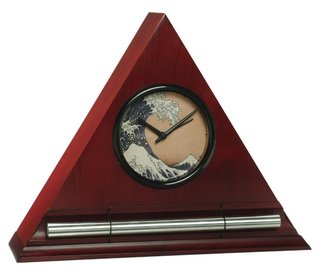 Gentle Alarm Clocks Alter Sleep Routine Now & Zen Headquarter Store
1638 Pearl Street
Boulder, CO 80302
(800) 779-6383
Posted in Bamboo Chime Clocks
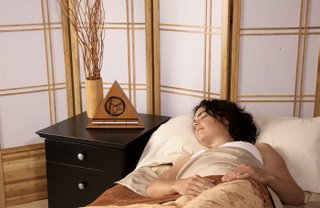 Turn your home into a sanctuary By Sherri Silverman
In dreams, homes are often symbols of our physical bodies. In Vastu, the “yoga of design,” the structure of our homes is representative of our own bodies: what goes on in one affects the other, and our own little universes of body and home embody the same forces that compose the vast universe. In fact, Mayan (according to legend, the originator of Vastu knowledge some 10,000 to 14,000 years ago) is said to have coined the aphorisms “As in macro, so in micro,” and “As above, so below.”
Vastu is a scientific and spiritually based system of design for all kinds of buildings: temples, businesses, homes. It creates dwellings in which prana (subtle, universal life-force energy: what Chinese systems of feng shui and Oriental medicine call ch’i) flows freely and there are no structural elements that predispose us to illness or problems in life. Buildings constructed according to true Vastu are conducive to good health. The principles of Vastu can also be applied to rectify energy imbalances in existing homes and create the peace and stability we need to have success on all levels, spiritual and material.
Knowledge of Vastu traveled from India along the Silk Road and on sea routes with merchants and monks. It influenced native East and Southeast Asian traditions, as did other fields of knowledge from India: Hinduism, Buddhism, Jyotish (Vedic astrology), and Ayurveda. There are even legends that Buddha himself traveled to East and Southeast Asia and could have brought India’s great knowledge systems with him. Emperor Ashoka, a famous convert to Buddhism, sent specialists in India’s traditions to Southeast and East Asia to meet local practitioners, find their indigenous traditions, and offer knowledge. These probably brief seminars brought valuable information that melded with the local customs.
Like meditation and yoga, Vastu is universal and useful for people everywhere. It is not a style of architecture or interior design; it is a complete system based on natural laws that can work with your own sense of style and beauty. You can have a Tudor Vastu home or a New Mexico Territorial Vastu home, Spanish Mission–style Vastu architecture, or log cabin Vastu architecture. Likewise, you are not restricted to a particular style of interior design: lots of frills and lace or a stark, Zen-inspired interior can both work within the Vastu framework. Almost all of your individual preferences in color, style, materials, texture, and furnishings can work in a Vastu home or office. As long as it follows the guidelines, is beautiful, and is well constructed with natural materials, any architectural style or design scheme can work with Vastu.
Meditation connects us with the source of pure consciousness; Vastu enhances this effect and connects us with the source through proper design. As a result, it is particularly relevant to people who practice meditation and yoga. Anyone, however, can benefit from applying some Vastu to their home. Here are a few guidelines that will help you turn your home into a yogic sanctuary.
The Five Elements: Panchabhutas
The principles of Vastu connect the dweller of the Vastu home with the subtle laws of nature, such as the energy grid of the earth, beneficial earth energies, and cosmic energies from the sun. They also align the home with the five elements of earth, water, fire, air, and space, which are called panchabhutas in the Vedic tradition. Each of these five basic elements is energetically associated with a particular direction. This is not an arbitrary assignment but an acknowledgement of the subtle laws of nature. By honoring the various elements and their primal energies, we are in greater harmony with nature. This results in greater harmony and ease in our lives.
Earth: bhumi or prithivi
The earth element is associated with the southwest direction, the best choice for the location for the master bedroom. Earth is a solid, dense, and grounded element. We all need a physical basis or foundation to survive in this world. Plants, trees, soil, rocks, and mountains represent the earth element.
Water: jala
Northeast is the direction where the energy waves of the water element collect. This makes it the best placement for indoor and outdoor water features: swimming pools, fountains, ponds, waterfalls, and aquariums. Water is frequently used as a metaphor for pure consciousness in the Vedic tradition.
Fire: agni
The fire element is predominant in the southeast, so it is the best placement for kitchens, fireplaces, computers, and other electrical equipment. Digestion in the body and transformation are also the realm of agni. To add and honor this element, light fires. Enjoy an indoor or outdoor fireplace in the southeast, and light non-toxic candles made of beeswax.
Air: vayu
The air element is liveliest in the northwest, so put fans, wind streamers, mobiles, wind chimes, and air purifiers here. The concept of movement in general is associated with this element and its direction. To reap the benefits of the prana in the air, learn and practice pranayama (yogic breathing techniques), preferably with windows open enough to bring fresh air into the room. Be sure that the air in your home is fresh. If your home has stagnant areas, you can use fans to keep the air moving.
Space: akasha
This element is directly linked to sound and silence. Akasha (sometimes called “ether”) is the expansiveness in the center of the architectural form and in the center of each room, the element of “energetic and dynamic space.” The center of the building and each room is called the Brahmasthan. It is the interface between the seen and the unseen, the manifest and the unmanifest. Honor the Brahmasthanby keeping it clean and clear, a revered open space. Don’t put heavy objects here.
Vastu expert Sherri Silverman, PhD, is the founder of Transcendence Design. This article is adapted fromVastu: Transcenden-tal Home Design in Harmony with Nature by Sherri Silverman. © 2007 by Sherri Silverman. Reprinted with permission of Gibbs Smith.
One of the ultimate Zen like experiences is waking-up from a great slumber refreshed and energized. Your mind and body are harmoniously one, both alert and focused. Having a refreshed mind and body are two keys to a natural and Zen lifestyle. Waking up in the morning should not be a loud and abrupt awakening, but rather it should be a peaceful positive experience. The right natural alarm clock can transition your deep and tranquil sleep into a serene start to consciousness. Imagine a long-resonating Tibetan bell-like chime waking you up to a beautiful morning experience.
The right alarm clock can be the most beneficial investment for you. With our Now & Zen natural alarm clock you are awakened more gradually and thus more naturally. Now & Zen is focused on creating a naturalistic lifestyle, and our clocks are an example of our philosophy.
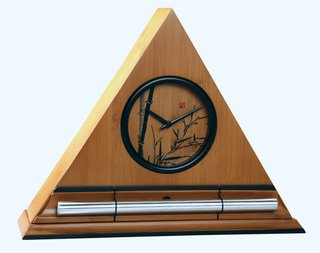 Bamboo Chime Clocks by Now & Zen Now & Zen – The Gradual Chime Clock Store
1638 Pearl St.
Boulder, CO 80302
(800) 779-6383
Posted in Chime Alarm Clocks, nature
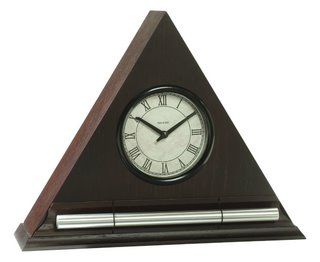 zen and the art of waking up, alarm clocks by Now & Zen, Inc. Zen Clocks provide an exquisite waking experience with natural acoustic chimes or gongs—once you wake up with a Zen Alarm Clock, you’ll never want to wake up any other way! These beautiful products are also in high demand for use as meditation or yoga timers.
Now & Zen Headquarter Store
1638 Pearl Street
Boulder, CO 80302
(800) 779-6383
 zen and the art of waking up, chime alarm clocks by Now & Zen
Posted in Bamboo Chime Clocks, Natural Awakening, Zen Alarm Clock
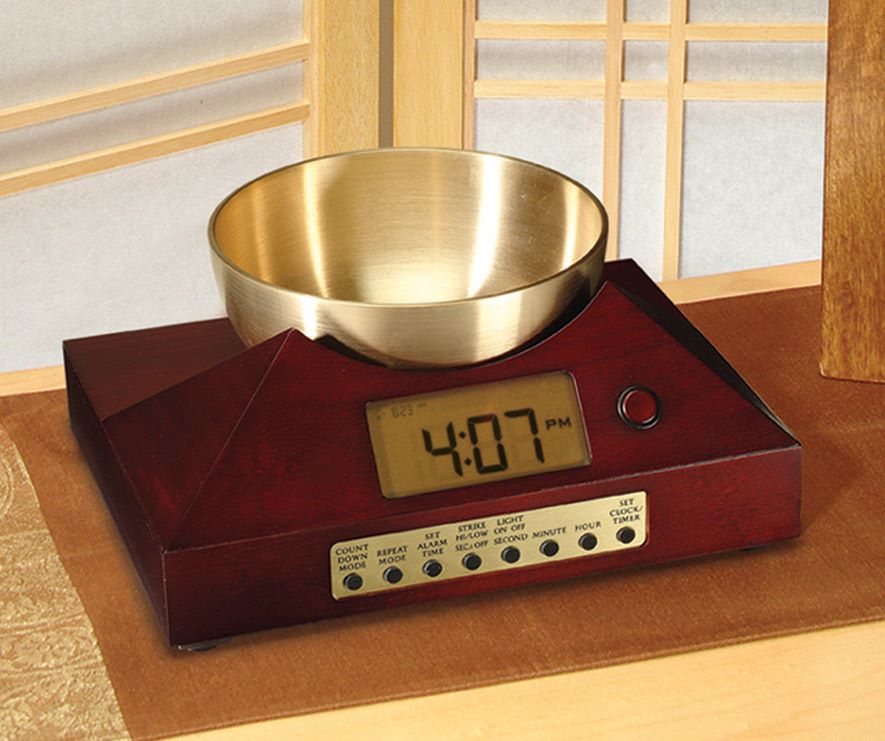 unique brass singing bowl alarm clock The Zen Timepiece
As a result of ten years of product evolution at Now & Zen, we have created the world’s most exquisite alarm clock and multi-use lifestyle timepiece. Our new Zen Timepiece’s acoustic brass bowl-gong fills your environment with beautifully complex tones whenever it strikes. In the morning, its exquisite sounds summon your consciousness into awakening with a series of rich, subtle gongs that provide an elegant beginning to your day. When the alarm is triggered, the bowl-gong strikes just once … then automatically, it strikes again in 3-1/2 minutes … then in 2 minutes … then in 1 minute … As shown in the chart on the facing page, the gong strikes gradually increase in frequency over 10 minutes, eventually striking every 5 seconds until turned off. Once you experience the Zen Timepiece’s progressive awakening, you’ll never want to wake up any other way. This aesthetically sophisticated product also serves as the perfect timer for yoga, meditation, bodywork, or any practice activity. It can also be set to strike its bowl-gong on the hour as a ‘mindfulness bell.’ As beautiful to see as it is to hear, the Zen Timepiece makes an elegant addition to your home.
 singing bowl alarm clocks In addition to the beauty of its sound, the Zen Timepiece is also visually beautiful, serving as a decorative accessory that can be positioned with the digital clock display facing out, or with the bowl-gong to the front, as shown on the right. It is available in either a clear maple wood finish or a reddish-brown cherry wood finish. The volume of the Zen Timepiece’s gong strikes can be adjusted over a wide range, from soft, subtle ring tones to loud, bold gongs that can be heard throughout the house. But regardless of how you use it, we are sure that the Zen Timepiece will improve your life with the natural resonant tones of its rich acoustic gong.
The Zen Timepiece runs on 2 “C” batteries (not included), it measures 4.5 inches high, 9.5 inches wide and 7 inches deep, and comes with a 40 page booklet detailing its many uses and its harmonic design.
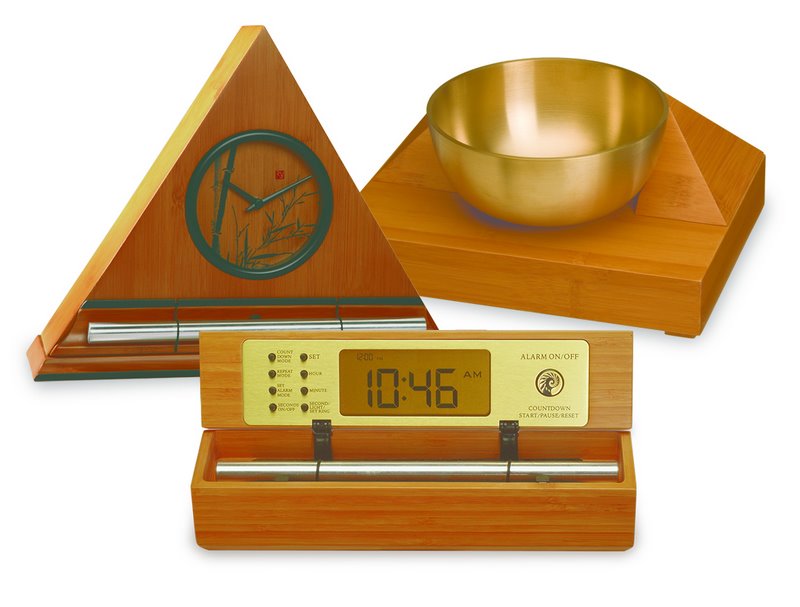 unique soothing gong alarm clocks with singing bowl Now & Zen
1638 Pearl St.
Boulder, CO 80302
(800) 779-6383
Posted in Now & Zen Alarm Clocks, wake up alarm clock, Well-being, zen
 Creating Beautiful Spaces as a Practice
Practitioners of disciplines such as yoga, or reiki often find that a periodic chiming timer is the perfect signal to change positions (or phases of the practice) at a pre-set interval.
 Yoga Practice
The Digital Zen Alarm Clock countdown repeat function in such practices adds not only to the precision and efficiency of the session, but also to its aesthetic value. Because the Digital Zen Alarm Clock’s soothing chime has been tuned with the same Pythagorean method as the specialized tuning forks used by musical therapists, its long-resonating sound helps create a calm environment in which practitioners can get the most out of their discipline.
Also, because the Digital Zen Alarm Clock’s appearance is aesthetically pleasing, it can be placed on an altar or other prominent location where it can add to the visual beauty of the practice environment.
 Digital Zen Alarm Clocks by Now & Zen  Bamboo Digital Zen Alarm Clock
Posted in Yoga Timers by Now & Zen, Zen Timers
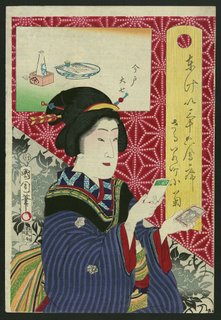 Toyohara, Kunichika, 1835-1900 7 Sources of Prana
By Sherri Silverman
1. An open window in the northwest, the quadrant where the air element is predominant
2. A vamsa danda, or spine of light, running unobstructed from the front door straight through the house to a back window or door
3. An open Brahmasthan (the center of the building) to allow the structure to generate prana from the middle of the house
4. Live plants and flowers in the house; outdoor gardens
5. Meditation and healing breath techniques
6. Fresh, organic foods in the kitchen (ideally, harvested from your garden or local farmers’ market)
7. Water elements such as fountains and aquariums, which replicate streams, waterfalls, lakes, oceans, etc.
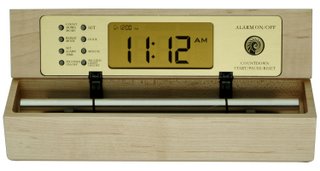 Natural Chime Alarm Clocks with Real Acoustic Sounds Now & Zen
1638 Pearl St.
Boulder, CO 80302
(800) 779-6383
Posted in mindfulness practice, nature
 Nautilus Shell has Inspired Maker's of Zen Alarm Clocks The Zen Alarm Clock wakes you with a “Golden Ratio” progression of chime sounds
The Zen Clock’s progressive chiming takes place over about 10 minutes. This progression is measured from the first strike of the chime until the clock reaches its final cycle of continuous chiming, about every 5 seconds, until shut off. The sequence of chime strikes within this 10 minute cycle is designed to approximate the “Golden Ratio.” The Golden Ratio, also known as the “Golden Mean”, the “Divine Proportion,” or simply “Phi,” is a special relationship between any given whole and a specific part thereof. Nature uses the Golden Ratio as its formula for creation.
The simplest expression of the Golden Ratio is in the division of a line: A line with a given length is divided into a small part and a large part. The relationship of the small segment of the line to the large segment of the line is in the same proportion as the relationship of the large segment to the line as a whole.
 Golden Ratio The Golden Ratio has been used since ancient times by artists, architects and designers to express harmony and balance. The beauty of the Golden Ratio is that all three parts––the small part, the large part, and the whole––are in perfect proportion with each other. Nature uses this divine proportion to grow from within itself. Golden Ratio relationships are everywhere in nature––from the human body to the solar system. The progressive sequence of the Zen Alarm Clock’s chime expresses the Golden Ratio by dividing the 10 minute time “line” into smaller and smaller Golden ratios. The first chime divides the line at 3 minutes and 27 seconds. The next chime divides the large part of the original division (the remaining 6 and a half minutes of the 10 minute cycle) by the same ratio. The process continues as illustrated below. The interval between chime strikes thus diminishes from within itself according to the Golden Ratio.
 Progression Chart The self-accumulating growth which is the essence of the Golden Ratio finds its most elegant natural expression in a “golden spiral.” A golden spiral is one which grows narrower as it turns inward. Nautilus shells, galaxies, whirlpools, and even your fist are examples of golden spirals. The progression of the Zen Alarm Clock’s chime forms an audible golden spiral. The clock thus echoes nature’s expression of divine harmony as it provides for a progressive awakening.
 Nautilus Shell To see the whole line of golden ratio inspired Zen Clocks, call for a catalog or see our website.
www.now-zen.com
Now & Zen – The Gradual Alarm Clock Store
1638 Pearl St.
Boulder, CO 80302
(800) 779-6383
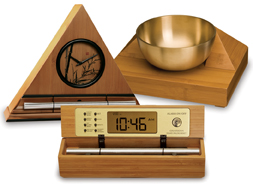 Gradual Progression Alarm Clocks
Posted in Golden Ratio, Now & Zen Alarm Clocks
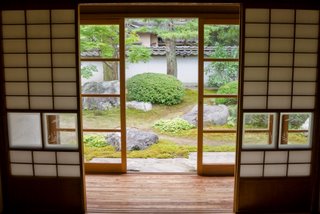 Zen Garden Calligraphy and the art of ink painting has inspired the design of our Zen Clocks.
One of our most popular dial faces features the calligraphy character for “dream” set against a rice paper or bamboo background. Japanese characters are called “kanjis” and so this dial is called the “Dream Kanji.”
Another dial face features the kanji for “Inner Peace” set against the raked sand of a Zen rock garden.
Although our “Bamboo motif” dial face has no calligraphy per se, it is inspired by the tradition of ink painting, which is a close relative of calligraphy.
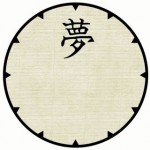 Dream Kanji Dial 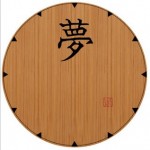 Bamboo Kanji Dial 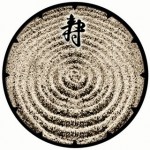 Zen Garden Dial  Bamboo Motif Dial
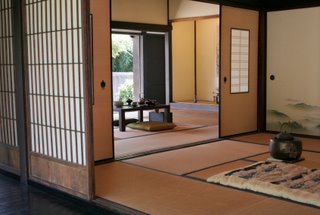 Japanese Interior Living Space Below is a description of this ancient art.
The flowing, brush-drawn Japanese language lends itself to complicated calligraphy. Calligraphic art is often too esoteric for Western audiences and therefore general exposure is very limited. However in East Asian countries, the rendering of text itself is seen as a traditional artform as well as a means of conveying written information. The written work can consist of phrases, poems, stories, or even single characters. The style and format of the writing can mimic the subject matter, even to the point of texture and stroke speed. In some cases it can take over one hundred attempts to produce the desired effect of a single character but the process of creating the work is considered as much an art as the end product itself.
 Calligraphy and the Art of Ink Painting used in Zen Alarm Clocks This art form is known as ‘Shodo’ which literally means ‘the way of writing or calligraphy’ or more commonly known as ‘Shuji’‘learning how to write characters’.
Commonly confused with Calligraphy is the art form known as ‘Sumi-e’ literally means ‘ink painting’ which is the art of painting a scene or object.
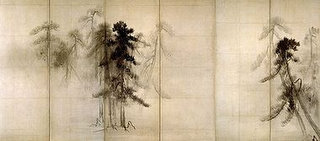 Japanese Ink Painting
Visit Now & Zen’s Showroom
1638 Pearl Street
Boulder, CO 80302
(800) 779-6383
Posted in Chime Alarm Clocks, Japanese Inspired Zen Clocks, Now & Zen Alarm Clocks, Zen Gardens
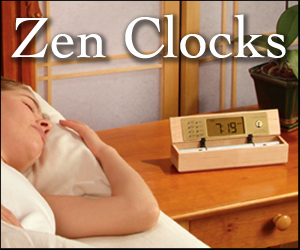 tranquil alarm clock Americans recently voted alarm clocks one of their most hated inventions—and it’s not difficult to understand why.
But it seems there is more reason to fear the alarm than to loathe it. For rather than just dragging you from slumber each morning, alarm clocks could actually be bad for your health.
You don’t need to be a doctor to appreciate that the sudden shrill of an alarm could be bad for your heart. And scientists have now proven that people who are suddenly forced awake by the sudden ringing of an alarm have higher blood pressure and heart rate than those who wake up peacefully.
Alarms can also add to your overall stress levels. The sudden noise triggers the body’s protective ‘fight or flight’ response, pumping up your adrenaline levels.
While this might be useful to get you to work on time, it can also lead to chronic stress which in turn contributes to high blood pressure, sleep problems and depression.
Now & Zen ® creates natural lifestyle products, such as their popular Zen Alarm Clock, that make a real difference in people’s lives. The growing preference for natural foods and natural fibers is carried forward by
Now & Zen® in the natural acoustic sounds and natural hardwood materials featured in every Now & Zen® product. With a wide selection of different styles, their unique alarm clocks wake you gradually and naturally. A series of beautiful acoustic chimes transforms your daily arrival into a tranquil beginning. Each timepiece combines beauty and versatility. These are high quality products that are not only modern and luxurious but are also peaceful and contribute to a stress-free day in an already stress filled world. Please visit their website to see these unique creations.
 Tranquil Alarm Clock with Gentle Chime Now & Zen – The Gradual Clock Store
1638 Pearl Street
Boulder, CO 80302
(800) 779-6383
Posted in Bamboo Chime Clocks, sleep
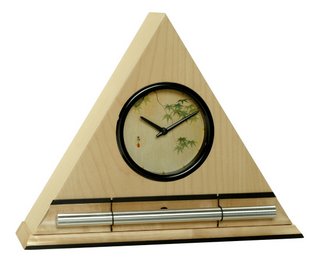 zen and the art of waking up, gentle chime clocks by Now & Zen Rise and Relax – a new concept for Alarm Clock
Incessant mechanical bleating breaks your sweet sleep, and the morning is spoiled before it has even begun! Anyone who has relied on an alarm clock to get them out of bed can relate.
Thank Buddha, for this nerve-jangling sunrise ritual can be transcended. Now & Zen, Inc. in Boulder, Colorado offers a soothing alternative with the gentle Zen Alarm Clock.
 alternative alarm clocks with chimes This line of solid maple and walnut clocks uses chimes that emulate Tibetan-bells to gently and gradually awaken users over a period of ten minutes. The tones can also be used for meditation and yoga.
To practice zen and the art of waking up, go to www.Now-Zen.com.
by Kelly Cunningham
Now & Zen – The Gradual Chime Alarm Clock Store
1638 Pearl St.
Boulder, CO 80302
(800) 779-6383
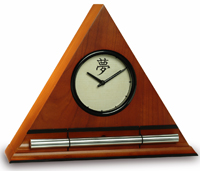 zen and the art of waking up, chime alarm clocks by Now & Zen, Inc.
Posted in Bamboo Chime Clocks, Chime Alarm Clocks, Now & Zen Alarm Clocks
« Previous Page — « Previous Entries
Next Entries » — Next Page »
|
|
|
|